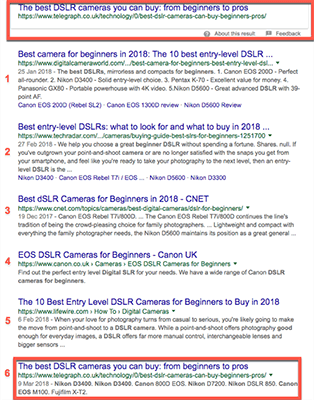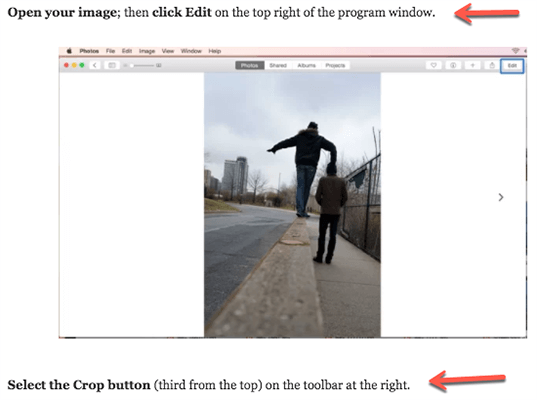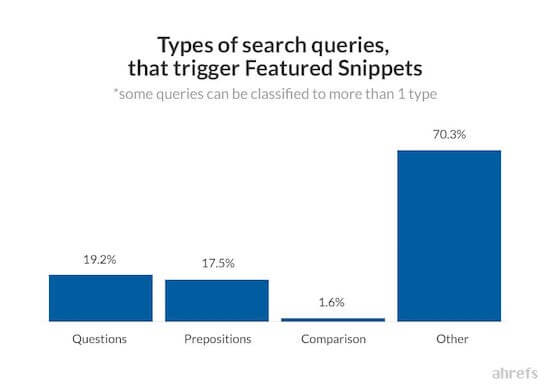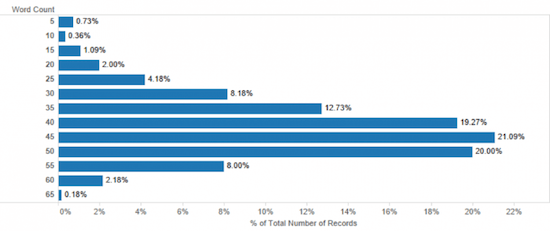Featured Snippets: How To Rank Position 0 In Google

How would you like to rank at the top of Google?
For most of us, reaching the summit is like climbing Everest. We sweat and toil, as we trudge step-by-step, following the recommended route.
But what if there was a way to bypass a few positions and claim the top spot, without changing your domain to Wikipedia or begging for backlinks?
In this article, we’ll take a look at how you can reach position 0 in the Google SERPs (search engine results pages) with a featured snippet.
What is a Google featured snippet?
A featured snippet is the ‘special search result’ you sometimes see above the normal search results at the top of Page 1 in Google. Most SERPs have ten results in positions 1 to 10 (excluding paid ads), but a featured snippet jumps the queue to rank in ‘Position 0‘.
Note: Featured snippets don’t appear on every SERP. According to RankRanger, they currently appear in about 11% of search queries (March 2018). One thing for sure is that they’re becoming more popular. Featured snippets rose from 2.6% in December 2015 to 9.6% by May 2017:

The snippet is a summary ‘extracted programmatically’ from the page, and usually answers a question. For example, if you ask the question, “What is the best DSLR camera for beginners?” Google features this summary:

The snippet contains the extracted answer from the page’s content, plus the page title and URL.
It’s important to note that Google doesn’t always use the top-ranking search result for the featured snippet. In this instance, it comes from the page in 6th position:

Note: On January 23rd 2020 Google rolled out an update that removed the duplicate listing for the page that gains the featured snippet. So, in the above example, the site would remain in the featured snippet but not show in 6th position anymore.
Featured snippet vs direct answer
Don’t confuse a Featured Snippet with a Direct Answer, which, as the name implies, provides a direct answer to a query but has no link to a source.
For example, if you ask for the currency conversion, “USD to GBP“, you’ll get the direct answer:

And in this instance, the answer box is interactive so that you can change currencies and amounts. Other direct answers are static; for example, “How old is the queen?“

The types of featured snippet
There are three types of featured snippet, with Paragraph being the most common according to GetStat:
- Paragraph – 81.95%
- List – 10.77%
- Table – 7.28%
Let’s take a look at some examples.
Featured snippet paragraphs
The most common type of featured snippet is the paragraph. For example, here’s how Google answers the question, “How to edit an image on Mac“:

The paragraph answer comes from a series of points in the article:

Featured snippet lists
The featured snippet lists are useful for ‘process’ search queries that require a series of steps to accomplish a task. Or, as we saw earlier, they are used for ‘top product’ search queries. The list snippet is either ordered (numbered) or unordered (bulleted):

Note: The example above also includes an image.
Featured snippet tables
The table type of featured snippet shows up when you search for prices; for example, “Nikon D3400 price USA“:

They’re an excellent way of summarizing promotions, pricing, and shipping information.
By now, I’m sure you only have one burning question: How do you rank in Position 0 with a featured snippet?
So, let’s take a look…
How to rank in position 0 with a featured snippet
There is no guaranteed way to rank in position zero, but there are quite a few things you can try.
1) Ensure you stay in position 0
If you already rank in Position 0 for some featured snippets, you should make sure you keep hold of that position.
You can check in Serpstat (aff):
[Web Analytics / Domain Analysis / SEO Research / Keywords] using the Positions option and adding the filter for Featured Snippets to see which keywords and pages meet that criteria:

Then it’s a case of maintaining each of your featured snippets:
- Keep your content up-to-date.
- Try to ensure that both the question and the answer are short enough to fit in the featured snippet box.
- Match your content to the current format of the snippet (paragraph, list, table).
Note: Serpstat is just one example of a tool that can do this. For more, check out my post on rank tracking tools.
2) Find content you’re ranking for that could be improved to reach position zero
Google featured snippets come from pages that rank in the Top 10:

So your next best option is to find your content that already ranks well and could be optimized for a featured snippet. [More on this later.]
Here’s how:
Open the Google Search Console. From the left-hand menu, click ‘Search Traffic‘ then ‘Search Analytics‘. Check the ‘Clicks‘ and ‘Positions‘ options so you can see your best-performing content. Click the ‘Position’ column to order results by the highest position and add a ‘how‘ filter to your ‘Queries‘:

Now you should see a list of your best performing content.
3) Find your competitors’ featured snippets
You can check if your competitors are ranking for featured snippets in the same way that you checked your site.
In Serpstat, enter your competitor’s domain at the top of the screen and filter your results as above.
Not sure who your competitors are?
Then use the ‘Competitors’ option to get a full list. Here are the top competitors for CNET.com:

Once you identify a target, you’ll need to create better content that’s optimized for featured snippets.
4) Research suitable keywords
The next step is to perform some traditional keyword research.
Here are a few tips to consider when researching keywords suited to featured snippets:
a) Use long tail keywords
When Ahrefs studied 2 million search queries with featured snippets, they discovered that long tail keywords triggered the majority:

Best practice suggests that writing in-depth content covering topics will naturally include hundreds of long tail keywords.
b) Use questions, prepositions, and comparisons
Featured snippets are designed to answer questions, so include direct question words – who, what, how, why, when, and where – in your keywords.
But don’t stop there.
While question keywords are best for paragraph featured snippets, it turns out that preposition keywords work best for lists, and comparison keywords for tables.

Note: Check out this detailed research by A.J. Ghergich for more details and examples.
c) Use Answer The Public
You can use the free research tool Answer The Public to compile a list of question, preposition, and comparison type keywords.
Start by entering your seed keyword and then assess the different types of questions that it suggests people are asking.
For example, when you enter ‘DSLR camera‘ you get 123 Questions, 101 Prepositions, and 100 Comparisons. The suggestions are available in both visual and list formats, plus you can download a complete CSV file.
- DSLR camera prepositions in visual format:

- DSLR camera comparisons in list format:

d) Use other keywords
Further research by Ahrefs showed that there were a group of ‘Other‘ keywords that triggered featured snippets more prominently than Questions, Prepositions, and Comparisons:

Here are a few examples from the ‘Other’ keywords group:
- Primary taste sensations
- Verizon lg g2 update
- Windows 10 compatibility
- Cocktail weiner recipe
- Gmat scores range
e) Know the questions your readers are asking
You can take advantage of the ‘People also ask‘ section in Google search results to gain further insights into related questions for each topic.
For example, from ‘DSLR camera for beginners’ you get these related questions:

And when you click the drop-down arrow you get even more related questions added to the bottom of the list:

5) Optimize your content for featured snippets
Google is quite clever at extracting data from a web page and turning it into a featured snippet. We saw earlier how it made a paragraph type snippet from a bullet point instruction page. Conversely, it can create list type snippets from the standard paragraph text on a page.
However, there’s no reason why you shouldn’t optimize your content to increase your chances of gaining the coveted position zero.
a) Create 10x content
You should start by creating engaging content that your readers and Google love. Remember you need to rank in the Top 10 before you have a chance of reaching Position 0. And the best way to rank in the Top 10 is to produce high-quality content, or as Moz calls it, 10x Content:
- It’s high-quality, trustworthy, useful, interesting, and remarkable.
- Solves a problem or answers a question by providing comprehensive, accurate, exceptional information or resources.
- Entertains and engages the reader with images and video.
- Provides a positive user experience via the user interface, layout, fonts, and images.
b) Format your content
Use headings and subheadings to divide your content into logical sections. In WordPress, you have options for H2, H3, H4, etc. as well as the standard paragraph. Follow a hierarchy so you get a natural flow. For example, in this Tailwind Review outline you can see how the subheadings work:

Format the main body of your content as a paragraph, list or table based on the information you’re presenting:
- Use paragraphs for definitions or explanatory answers
- Use bullets or numbered lists for a list of items or a multi-step process
- Use tables for the presentation of data or comparisons
- Use relevant images to illustrate your answers
c) Format your content according to the different types of featured snippet
Each type of featured snippet requires a different approach when you format your content. You’ll need to consider the number of words you use and how you answer the potential search query.
Formatting for paragraph type featured snippets
In order to provide a featured snippet paragraph answer, Ann Smarty recommends adjusting your blogging style as follows:
- Ask the question in your subheading
- Immediately follow the question with a one-paragraph answer
- Elaborate further in the article
It’s what journalists refer to as ‘the inverted pyramid’. Start your page with the most important information that answers the question, then move onto more detailed information, before closing with related topic information.

When you write your one-paragraph answer, aim for between 40 and 50 words (around 300 characters). According to SEMrush, this is the most common length of a paragraph type featured snippet:

Formatting for list type featured snippets
When you create a list, it’s a good idea to make it longer than the eight-item maximum so that Google adds the ‘More items…’ text.
For example, here’s the featured snippet answer to the question, “What are the benefits of using a DSLR camera?“

The ‘More items…’ text arouses curiosity, and you’re tempted to see what the other benefits are. The article in this example has two more items:
- Weather sealing
- Solid construction
Note: Please don’t make a long list just for the sake of it. Write naturally!
Formatting for table type featured snippets
Google shows a maximum of 3 columns and 9 rows in a featured snippet table. But, like the list snippet above, if your table contains more rows, it will add an ‘XX more rows’ message.
Here’s an example of a featured snippet table with a “29 more rows” message when searching for the term ‘camera prices‘:

Finally, here’s a comparison table from Moz on the optimal featured snippet lengths:

Summary
- Consolidate and improve your existing featured snippets
- Research new keywords suited to featured snippets
- Write engaging content that’s optimized for featured snippets
How to opt out of featured snippets
Considering Google now removes the organic listing from the 1st page once they are given a featured snippet, it’s entirely possible that you may prefer to opt out of displaying featured snippets.
In which case, you would need to add this meta tag to the page:
<meta name="googlebot" content="nosnippet">
If you want to opt out entirely, you would need to add the code site-wide. Alternatively, you could add it for specific pages only.
If you’d prefer to avoid messing around with code, some popular WordPress SEO plugins such as Yoast SEO now offer the option to add this tag while editing your content.
Conclusion
Ranking in position 0 with a featured snippet is not to be scoffed.
Ranking in the Top 10 is a significant achievement in itself, but claiming position 1 is a slow process involving many contributing factors.
The featured snippet route to the top gives everyone a chance to shine by creating and formatting high-quality, engaging content.
And if you want to further optimize your website to stand out in Google Search, be sure to check out my post; What Are Rich Snippets? A Beginner’s Guide To Schema.

